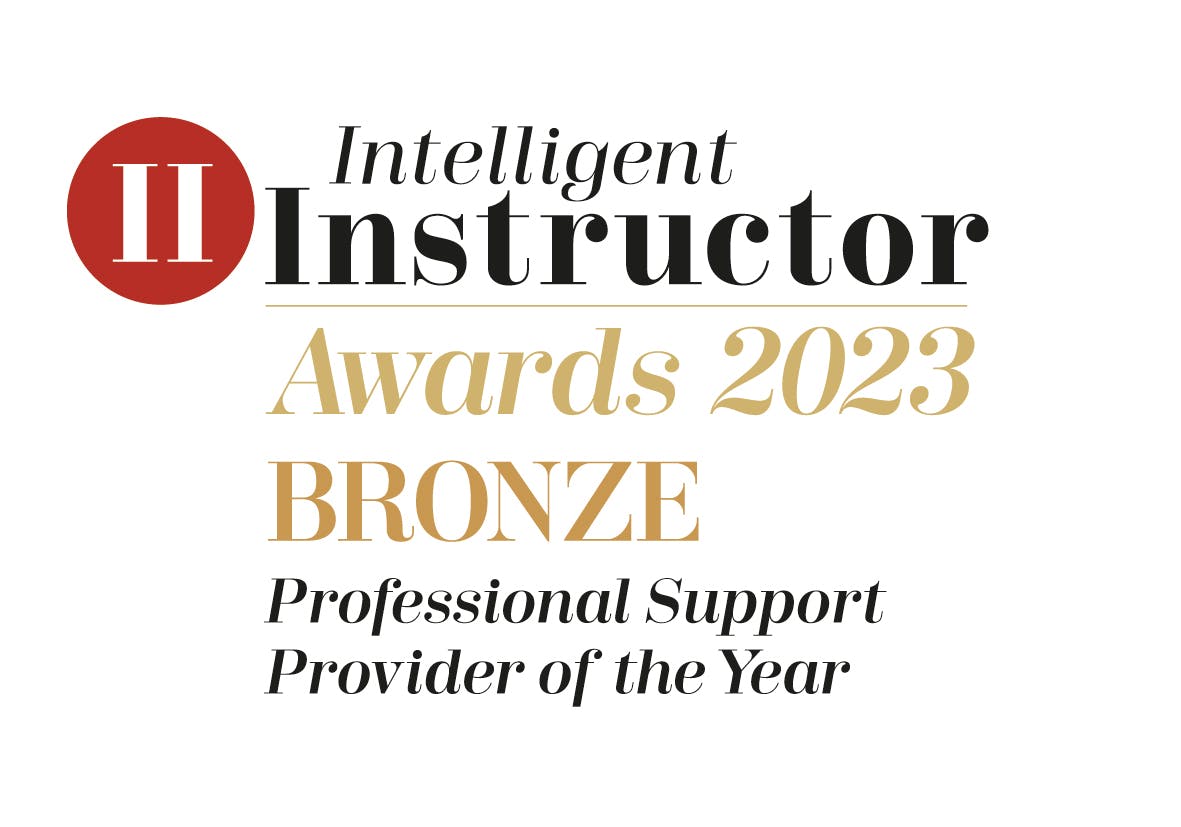
Brooklyn Beckham reportedly learned to drive in a Mercedes C-Class and Kendall Jenner got a Range Rover for her 16th birthday, but when most of us don the 'L' plates, we're limited to more realistic options. That doesn't mean settling though. There are some great vehicles out there, and we put that all-important question to our expert Approved Driving Instructors (ADIs): what’s the best car for learner drivers?
We’ll also take you through what to look for when you're ready to buy your first car, and discuss why the car isn't the most important thing when choosing your instructor.
What's the best car to learn to drive in?
Everyone has their own ideas about the best car to learn in, but it’s always worth looking to the professionals to see what they think. So, here they are: the top 10 cars for learners, according to our driving instructors*.
=9. Volkswagen Polo
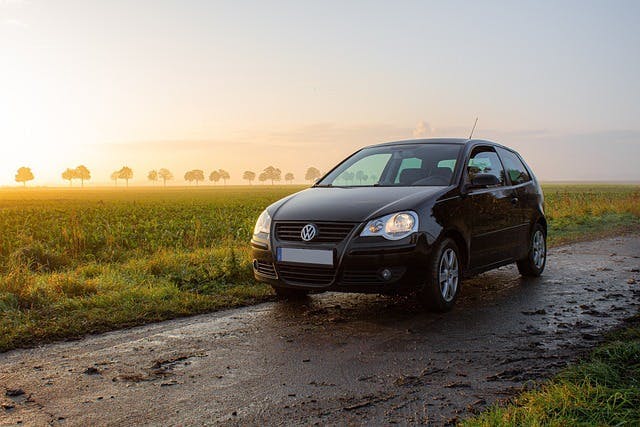
Image source: Vladan Rajkovic via Pixabay
The Polo boasts a comfortable, roomy interior, with nice, weighty handling. Its slick gearbox will help you achieve those silky smooth gear changes that’ll impress driving examiners and passengers alike. Our instructors rate the Polo as an excellent all-rounder, and it’s safe to say we’re fans.
A PassMeFast favourite, and a classic for first-time drivers! Cazoo has a Polo for every budget!
=9. Peugeot 308
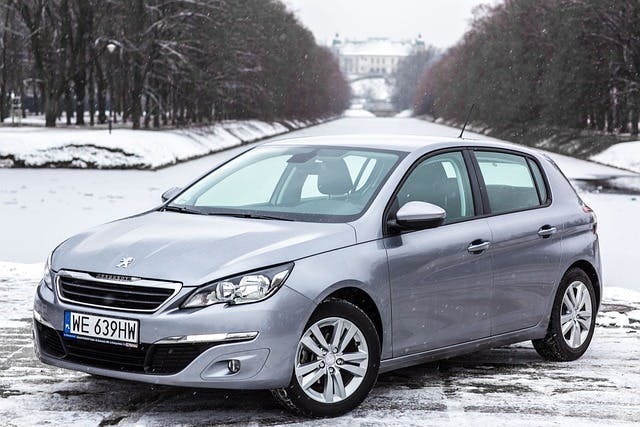
Image source: wydawca from Pixabay
The older 308s come with mixed reviews, but the model is popular amongst our driving instructors because of its smooth, quiet ride and good fuel efficiency. It’s practical in terms of boot space, but if you’re looking to buy one, check that your backseat has enough room.
As in most of Peugeot’s models, the steering wheel is small and sits low. That means you look over it to see the speedometer; different to many other vehicles.
MoneySuperMarket gives you lots of clever ways to save a lot, by doing very little; you can compare and save on over 40 products, from over 55 of the biggest insurance providers in the country.
8. Citroën C3

Image source: Nickbar via Pixabay
There’s plenty of head room in the driver’s seat of the Citroën C3, although it isn’t the most agile car on our list. What it does offer is comfort, reliability and a smooth ride.
If you like the comfortable things in life, the extra room in the C3 is perfect for you! Cazoo have a great range of colours and trims — which one is a bit of you?
7. Volkswagen Golf
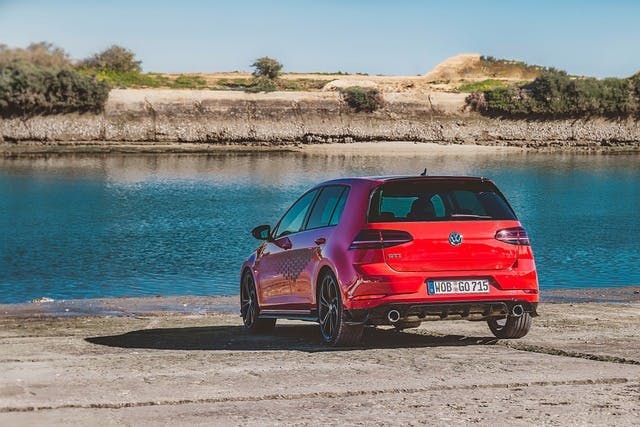
Image source: ddzphoto via Pixabay
Another VW makes the cut in our list of best learner driver cars, this time with the Golf. This model has great visibility and manoeuvrability—and, again, is a real hit with very tall drivers, without compromising on space for passengers in the back.
6. Ford Focus
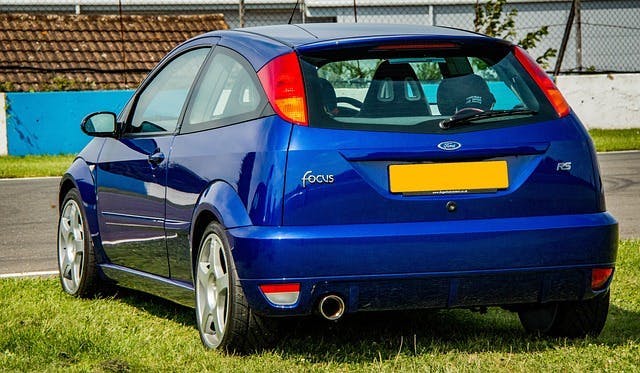
Image source: Toby Parsons via Pixabay
One of the bigger hatchbacks on our list, the Focus will give you confidence in manoeuvring and parking something of a really practical size. That’s not to say it’s a difficult car to handle; far from it. There’s a nice weight to the steering, making it fun to drive and a definite contender for the best learner driver car.
If the Focus takes your fancy, check out Cazoo and join thousands of happy customers!
5. Peugeot 208
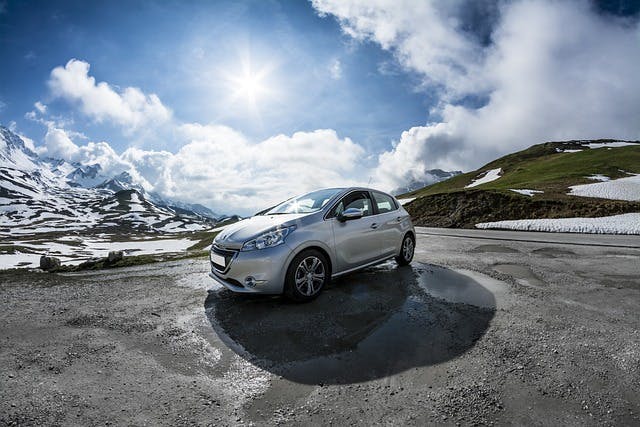
Image source: 453169 via Pixabay
It’s easy to park (what an accolade!), making the Peugeot 208 our driving instructors’ 5th most popular car for learners. As with the 308, the steering wheel position isn’t universally loved, but the car’s both responsive and stylish. You can’t have everything, after all.
4. Renault Clio
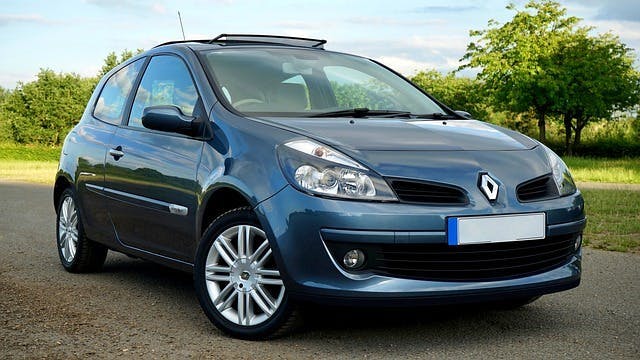
Image source: AutoPhotography via Pixabay
The Renault Clio is certainly one of the best learner driver cars around. It’s best features include its cornering abilities, and—while you might not fully appreciate it as a learner—the impressively spacious boot.
Super Save up to £319.82* on your car insurance with MoneySuperMarket* *51% of consumers could save up to £319.82 on their annual car insurance premiums. Consumer Intelligence, May 2022, UK only.
3. Vauxhall Corsa
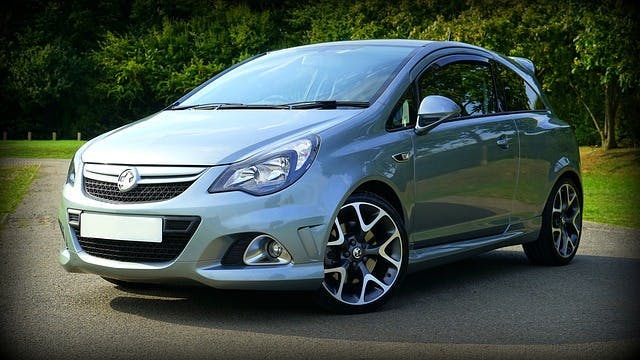
Image source: Mikes-Photography via Pixabay
Renowned for its ease of driving, the Corsa gets a big thumbs up from our ADIs. The 5-door is a great size for families, and 2019 models onwards are famed for being much more nimble than their predecessors.
2. Toyota Yaris
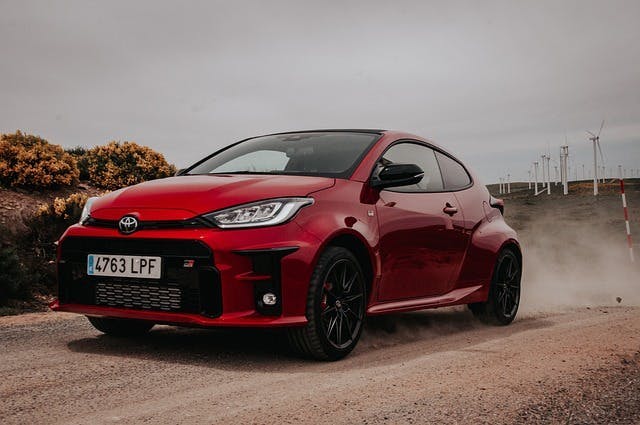
Image source: AJGP Fotografia from Pixabay
Both the automatic and manual versions of the Toyota Yaris are popular amongst PassMeFast instructors. It’s a nippy car with a smooth ride, but just watch out for blind spots; the rear window isn’t huge. On the other hand, Toyotas are well known for being reliable and durable, so the Yaris offers great value over the long term.
1. Ford Fiesta
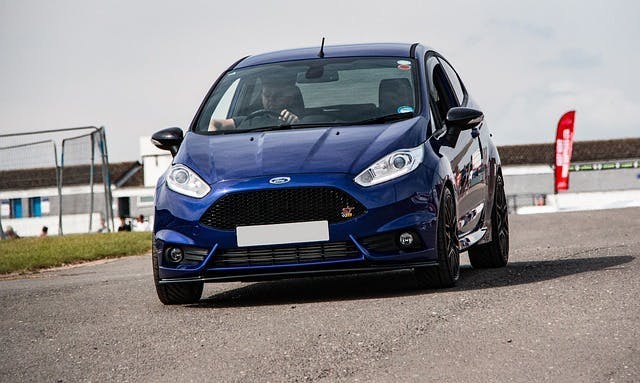
Image source: Toby Parsons via Pixabay
Ever a favourite, the Ford Fiesta tops our list as the best car to learn to drive in. It’s the vehicle of choice for hundreds of our driving instructors—and it’s easy to see why. Learner driver friendly, it’s rated for its responsiveness and value for money. It’s a little smaller than the Focus, which some learners might prefer—but still roomy enough to be comfortable. All in all, a great first car!
What’s the best car to buy as a learner driver?
Buying a car is pretty personal: we all have different lifestyles, so the best first car for you may not work for someone else. But when you’re looking at options, there are some things you’ll always want to bear in mind.
One extended test drive
If you’re not ready to commit to buying a car as a learner, driving lessons are a great way to try out a vehicle. You’ll really get to know about the ins and outs of your instructor’s car, and you can use this knowledge to help you when it comes to picking your own.
Size
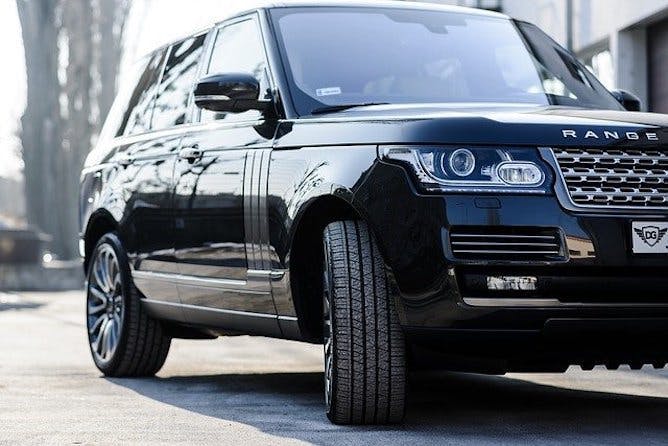
Most new drivers want something that’s big enough to be comfortable, but small enough to manoeuvre well. When you’re learning to drive, you won’t usually have much of an option: most instructors tend to have 4 or 5 seat hatchbacks.
However, when you’re buying your first car, you should also consider your needs in terms of boot space and passenger comfort. Don’t worry if you require something a little bigger than other beginner drivers: you’ll soon become accustomed to judging how long your car is.
Visibility
Good visibility helps you to park, change lanes and overtake as safely as possible. You need to get used to checking your blind spots, because every car has them—but ideally look for a vehicle that doesn't have huge pillars obstructing your view. Of course, modern cars might have extra features, like parking sensors, to compensate for any visibility limitations. Use these as a backup, rather than something you’re completely dependent upon.
Responsiveness
You might have heard people describe their cars as ‘nippy’ or ‘sluggish’. Different cars (and petrol and diesel vehicles) respond differently: when you step on the pedals some will take off with a bang, whereas others take a little time to get going. This can affect when you choose to pull out and overtake, so it’s important to take this into account on your test drives.
Reliability
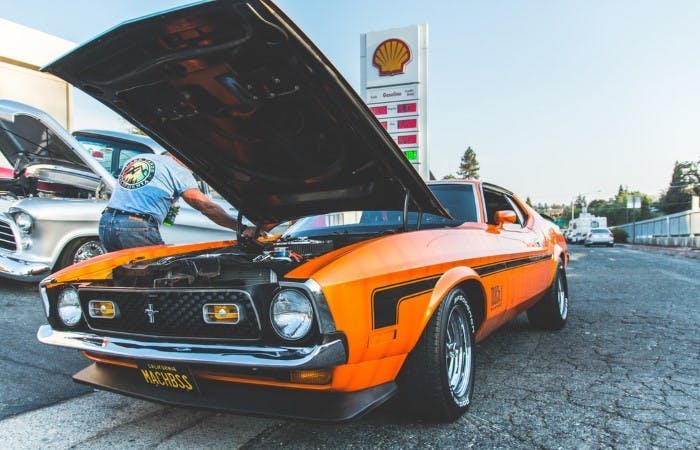
Instructors tend to go for cars that won’t let them down on a regular basis, so they aren’t out-of-action for much of the time. That’s a tip you’ll want to take on board. The last thing you want as a new driver is the inconvenience of an unreliable vehicle. And, having already splashed out on lessons, insurance, tax and all the rest of it, you don’t want tonnes of repairs to set you back further.
Car maintenance can be inconvenient and expensive, Fixter can help remove the hassle. They collect, fix and deliver. Whenever. Wherever. MOT, Service and Car Repair without leaving your sofa.
Age
While newer cars aren’t necessarily better, they might come with extra features—although don’t get sucked into paying for bells and whistles that you don’t actually need. Some can be useful, especially for inexperienced drivers, but there’s nothing wrong with basic. You should be able to drive a car without parking sensors, cruise control or lane correction technology, after all. Although it often correlates with age, mileage will often give you a better indication of how much longer you can expect the car to run than simply looking at how old it is. One final point on age: check the year of the car against any known faults. Some makes and models have ‘bad’ years, with well-documented glitches. Taking the time to do some research could save you serious money in the long run.
If you're buying something a bit older to get you going, make sure you check out RAC Breakdown Cover so you are covered in case things go wrong!
Eco credentials
If you can afford the upfront costs of going eco, there are some great options out there. You’ll save money on fuel and car tax, whilst knowing that you’re reducing your environmental impact. Remember that whatever car you end up getting, there are always ways to be a more eco-friendly driver.
Price

Price is a huge consideration when buying a car, whether you’re a learner or not. Remember to look at all the factors: tax, insurance (MoneySuperMarket is a great way to make sure you're getting the best deal), fuel, likely maintenance and upkeep (mileage and individual car history might give you a clue on this), as well as the initial cost of the vehicle, when you’re deciding how economical a purchase will be.
Dual controls
It’s best to learn to drive in a car with dual controls, so that you can develop your skills and gain confidence within a safe environment. That’s one of the main reasons people opt to learn in their instructor’s car, rather than their own. Once you’re ready to pass, you will be competent enough to rely on your own actions—so dual controls wouldn’t usually factor in your thinking when you’re buying your first car.
Best car to learn to drive: FAQs
Should I pick my instructor based on what car they have?
When you’re looking at who to take driving lessons with, the most important thing to focus on is the instructor, and not their car. That’s because a great instructor should be able to teach you well in any vehicle. Most instructors have reasonably small hatchbacks, which drive pretty similarly to each other. And whether your instructor has all the latest tech features or not, they should make sure you can drive using the basics, so that you can transfer your skills to any car after you pass your test. All in all, it’s best not to place too much weight on your instructor’s car.
Should I learn in a manual or automatic?
Where possible, we tend to advise learners to try learning in a manual car, rather than an automatic. Although automatics are on the rise, they are still less common than manual transmissions, and limit your driving licence. Saying that, if you really don’t get on with a clutch, or you have a disability that makes changing gears more difficult, then an automatic car will still give you the freedom to enjoy the open roads.
I want to learn in an automatic. What are my options?
If you’re set on learning in an automatic car, your options will be slightly more limited than choosing to go with a manual. However, there are still plenty of good cars to learn in. Lots of our instructors favour the automatic Toyota Yaris.
I’m disabled. What cars would work well for me to learn to drive in?
If you need a car with adjustments, see if you qualify for the Motability scheme. They’ll be able to supply you with a vehicle that suits your specific needs, and can sometimes even put in dual controls to help you with your driving lessons. Don’t forget to check whether you qualify for Motability’s free lessons as well.
Can I request to learn in a particular car with PassMeFast?
If you have any specific requirements when you book in, then we’ll always try to accommodate them—and advise you if it’s not possible. However, be aware that specifying a certain make and model of car limits your options quite considerably, and you’ll probably have to wait longer before we can match you with a suitable instructor. Think about why you’re wanting to learn in a particular model. Is it because…
- That’s the car you’ll drive after you pass? There’s really no reason to do this, as your instructor will provide you with all the necessary skills to adapt to other vehicles.
- You’re exceptionally tall? If you’ve had trouble with any specific cars in the past, let us know. But don’t worry, there are quite a few good options for uncommonly tall drivers, such as the Volkswagen Golf.
I’ve started learning in ‘X’ car. Will it set me back if I switch to learning in ‘Y’ car instead?
If you’ve started learning to drive in a different car, you shouldn’t worry about changing make or model if you switch instructors. Most instructors’ cars actually drive very similarly. It might take you a short time to get used to a new biting point and feel of the car, and you may stall more regularly for your first few journeys, but you’ll soon pick it up.
Anyway, it’s great experience, because chances are you’ll be driving a different car when you’ve passed anyway. Just be careful that, if you’ve learnt certain reference points in one car, you don’t transfer them to another.
Can I learn to drive in my own car?
Short answer: yes. Longer answer: take a look at our blog post on the pros and cons of learning in your own car. There are a few reasons most people opt to learn in their instructor’s car, dual controls being a big one.
Do you agree with our assessment of the best car to learn to drive in? Did you like or loathe your learner car? Let us know in the comments below!
Subscribe for driving advice, offers & more
We'd love to let you know about our courses, news and offers via email. You may unsubscribe at any time.
Star Genie Limited trading as PassMeFast. Company number 10093359
Copyright © 2024 owned by Star Genie Limited
PassMeFast, Blue Tower, MediaCityUK, Salford, M50 2ST
